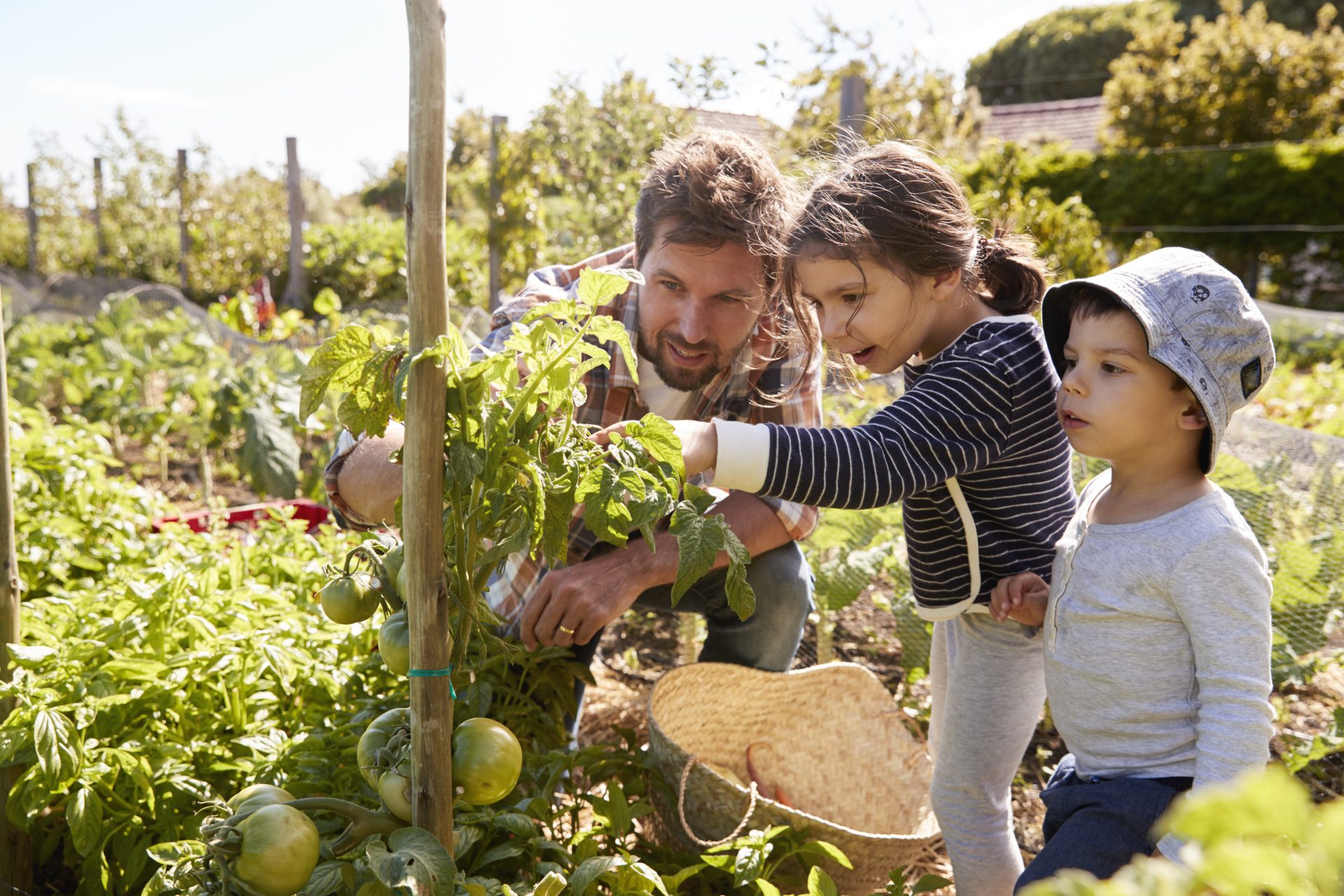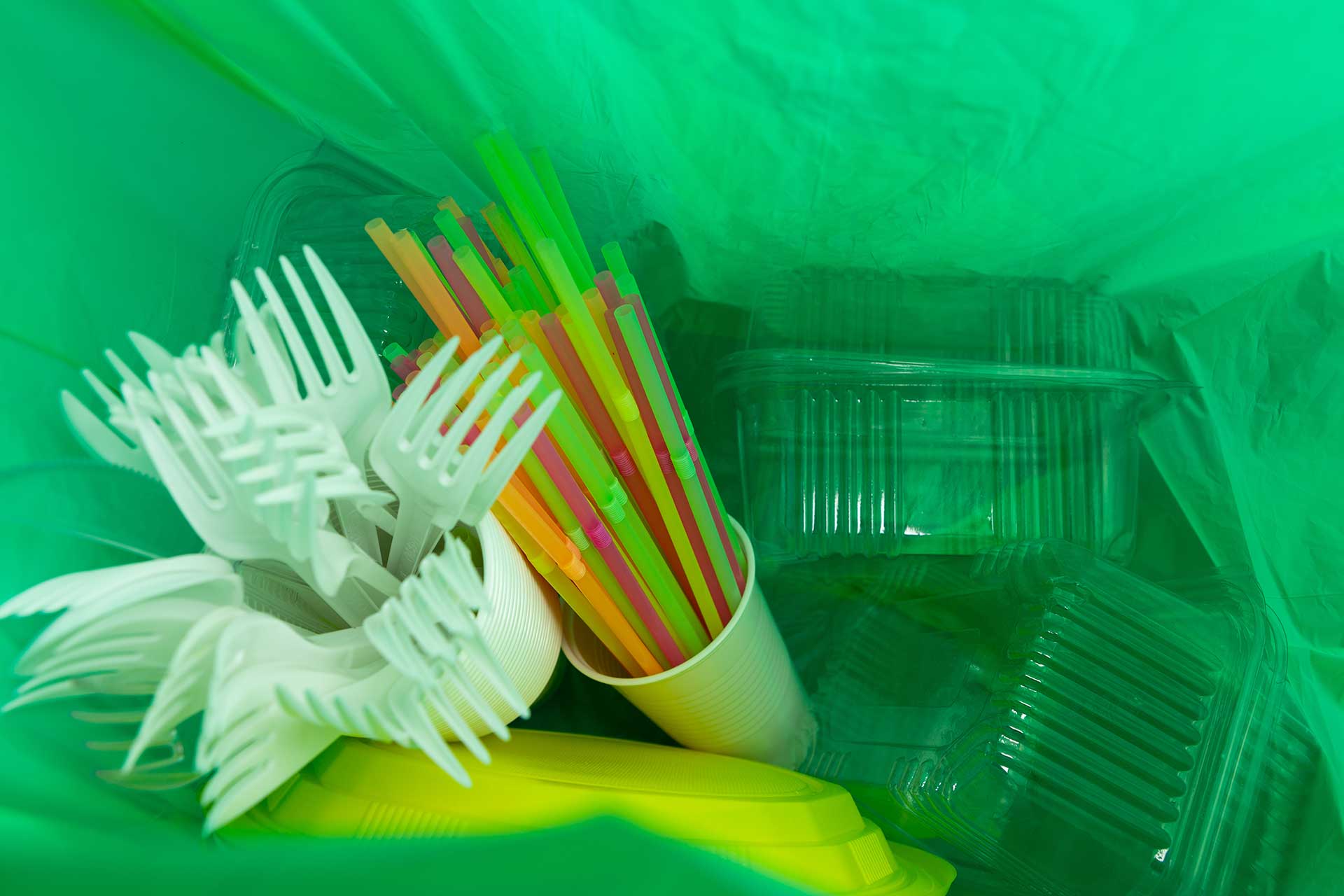Use a grocery store trip to teach kids environmental stewardship
The supermarket is magic for kids if you know how to use it. On days when my child has said she’s bored for the umpteenth time, the supermarket is my secret weapon. It’s not ideal for a rushed weekly stock-up, but when I have the time, an intentional trip, even a quick 15-minute visit, can be a learning experience that builds curiosity and critical thinking, establishes the connection between food and the environment, and sets the groundwork for climate-friendly habits.
Climate change is already wreaking havoc on weather, food systems and ecosystems, threatening our kids’ future. Helping children understand the connection between climate change and food will give them the knowledge, critical thinking skills, and sense of agency to be part of the climate change fight. Despite being an indoor activity, supermarket shopping can be considered part of the grand tradition of environmental education, which fosters ecological awareness, critical thinking and responsible action through direct experience and learning. Everyday encounters like examining where food comes from can play a role by tapping into children’s innate desire to connect with nature, shaping them into environmental stewards.
“Shopping, and any of our daily activities, are great opportunities to talk to children about what we care about, and to talk to them about what they care about. When we think about building children’s environmental literacy, we think about what they know, what they care about, what skills they have to take action, and — importantly — helping them feel like they can make a difference,” says Christy Merrick, Director of the Natural Start Alliance, an organization that works to bring nature and the environment into early childhood education.
From reading food labels to comparing types of food packaging, supermarket aisles offer endless opportunities to explore where our food comes from, how it was produced and how that impacts our soil, water, air and climate. Plus, simple errands like grocery shopping support child development.
Easy supermarket activities by age group
With creativity, your grocery store can double as a mini climate classroom, with no worksheets required. Here are some ways to engage kids in meaningful, age-appropriate conversations about food, waste and the planet.
Toddlers (ages 1 to 3)
Even the youngest children can participate in shopping that builds eco-awareness. As you put items in your cart, start talking about the textures of fruits and vegetables, their colors and where food comes from.
“Ask aloud, ‘How did this apple get from the farm to the supermarket?’ Kids are excited to learn about how plants grow and make it to their plate,” says sustainability expert and author of “A Pocket Guide to Sustainable Food Shopping,” Kate Bratskeir.
Use simple language, for instance “this fruit grew on a tree,” or “these carrots grew in the ground,” to start explaining what grows in your state, what’s seasonal and what’s local. These talks will help kids understand that food is part of the natural world, nature has patterns and cycles, and that the food we eat depends on the environment and climate. It’s setting the foundation for more advanced conversations around climate as your child grows, like how climate change can shift growing seasons and impact the kinds of foods we see at the store.
By making it as local to you as possible and explaining that different things grow in different places, you’re also making the lessons more tangible and immediate. By making it as local to you as possible, and explaining that different things grow in different places, you’re also making the lessons more tangible and immediate. Studies show that connecting your child with their local environment [link] and nurturing their awe of the natural world can help them become good stewards of the planet.
Preschoolers (ages 3 to 5)
A grocery store scavenger hunt is a fun way to make a supermarket trip engaging and a climate lesson for young kids. Challenge them to find food in different types of packaging. You can explain that plastic is detrimental to the environment, because of how it is made and how, once disposed of, it persists forever in our environment. Plastic is made from fossil fuels, like petroleum and natural gas, whose extraction emits greenhouse gases that contribute to climate change. When we buy products wrapped in plastic, we’re supporting a system that pollutes the environment, harms wildlife and warms the planet. Similarly, you can talk about how other packaging materials like glass, aluminum and cardboard are made, which types of packaging have a larger environmental footprint and what happens to different types of containers when you’re done with them. For instance, which produces more trash, loose individual apples or bagged apples? Yogurt in individual cups or one larger tub containing multiple servings? Which packaging uses more resources: apple sauce in a plastic container or in a glass jar with a metal lid?
If you have a zero-waste market or a bulk food aisle at your supermarket, have your kids help fill up reusable containers with what you need. This can be a lesson both in food packaging as well as food waste, another contributor to climate change.
“I have parents who will use the bulk bins to talk with their kids about not taking more than they need or only buying what they need for dinner,” says Jason Hine, the owner of a zero-waste store called The Ditty Bag in Mystic, Connecticut. Nothing in the store has single-use plastic. Hine says he sees parents use that as a jumping-off point for conversations about why things come in certain packaging or not
Continue to talk about where food comes from, where it goes if we waste it, and who helped grow or make it. Even if these kids are too young to understand, say, the connection between food waste and climate change, these early conversations build systems-thinking and empathy, key skills for understanding and caring about our climate impact.
Early elementary (ages 6 to 8)
As kids age, grocery shopping can evolve with them, offering opportunities to practice critical and flexible thinking skills and problem-solving. If you haven’t already, start pointing out some of the many ecolabels that show up on our food products, and discuss what they mean. It can be a launching point for discussing pesticides (USDA Organic label), fair prices for farmers (Fair Trade) or animal welfare (Certified Humane).
As children’s awareness grows, you can start connecting these dots of food’s journey from farm to plate to trash or compost— who makes our food, how far it travels and what’s left behind when we’re done with it.
“When talking about environmental issues, it’s important to focus on issues and concepts that are relevant to children’s interests and experiences, and to frame problems as fixable,” Merrick says.
This is also the age when you can start talking about the climate impact of plant-based versus animal-based foods. Whether or not your family consumes meat, it is a critical topic to discuss when it comes to climate change and reducing climate footprints. Livestock farming is responsible for 14.5 percent of human-caused greenhouse gas emissions, and numerous studies found that reducing meat and dairy consumption is the most impactful single dietary change individuals and households can make to reduce the climate footprint of their food.
Bratskeir, who is vegetarian but whose 2.5-year-old twins currently eat meat, says she expects to start talking to her kids about the difference between what she eats and what they eat by early elementary school.
“I’ll be as careful as possible not to guilt them into making a certain decision. I want my kids to eat consciously for the planet, but I don’t want them to feel restricted in any way when it comes to food. I’ll explain to them why I stopped eating meat as a kid, and the many different options they can make when it comes to their own diets,” Bratskeir says.
At the market, you can get your kids’ buy-in on reducing your household’s meat consumption by trying different plant-based options. For instance, Bratskeir suggests that you explain to your children that you could buy chicken to make their favorite tacos — or make the same dish in a more environmentally friendly way (and one that avoids animal suffering) by swapping out the chicken for meaty mushrooms, or using a plant protein like beans or tofu.
“Test out a new alternative every week and review your favorites and least favorites together. When your children get to be part of this process, rather than all of sudden being served tofu instead of chicken one night, they’ll be more engaged and willing to try something new on their plate,” Bratskeir says.
Older kids/tweens (ages 9 to 12)
At this age, you can invite kids to choose an item that they think is good for the planet and explain why. Make it a game: for instance, you could ask them, “Which fruits are in season where we live?” (and use FoodPrint’s Seasonal Food Guide to check the answers). Remember talking about seasons helps to connect children with their geographic place in the world. For the many fruits and vegetables at the supermarket that aren’t in season, talk about where they might have come from and how they would get to your supermarket. You could also ask, “Are these strawberries that say ‘organic’ better than the non-organic ones?” and follow it up by asking “What do we mean by better? For us? For the planet? For the farmworkers?” Why? (If you yourself want to understand what the organic label entails, you can read more about it on FoodPrint.)
“We can make our choices visible to children by talking about them — so, saying something like, ‘I think I’m going to choose this cereal because it’s organic. That means that farmers didn’t put any chemicals on the plants that this is made from,’” Merrick says.
Adds Judy Krause, executive director of Early Childhood Programs at Pacific Oaks College: “Our ultimate goal as parents is for our children to be self-reliant and develop independence and autonomy. One simple way to do this is to provide a sense of empowerment when shopping for the family’s groceries.”
By asking your kids these questions you’re helping them understand that food has a story that starts before it reaches the grocery shelves, and to think critically about the environmental impacts of those different journeys. These are lessons that extend beyond the grocery store, too, of course.
Get the latest food news from FoodPrint.
By subscribing to communications from FoodPrint, you are agreeing to receive emails from us. We promise not to email you too often or sell your information.
Top photo by Serhii/Adobe Stock.
More Reading
This fall, get involved in one of these campus sustainability initiatives
August 26, 2025
What we’re reading this summer
July 17, 2025
A new book says tech-supported industrial ag will feed the world. Agroecologists would like a word.
July 9, 2025
Can rye growers get consumers and retailers excited about rye?
May 19, 2025
Can private grants fill regenerative agriculture's federal funding gap?
May 1, 2025
Books to inspire young environmentalists
April 22, 2025
Our latest podcast episode on pistachios: The making of a food trend
April 1, 2025
How refrigeration transformed our palates and our supply chain
January 28, 2025
What to expect in food & farm news in 2025
December 24, 2024


